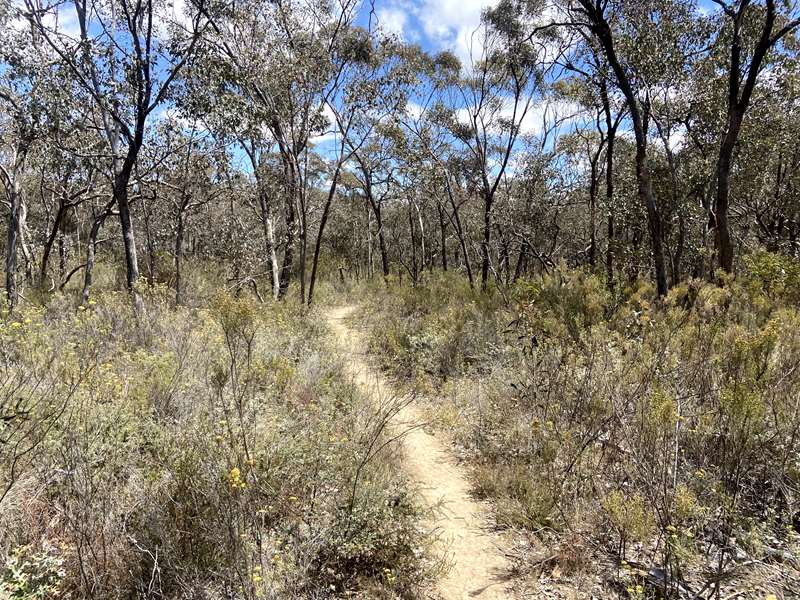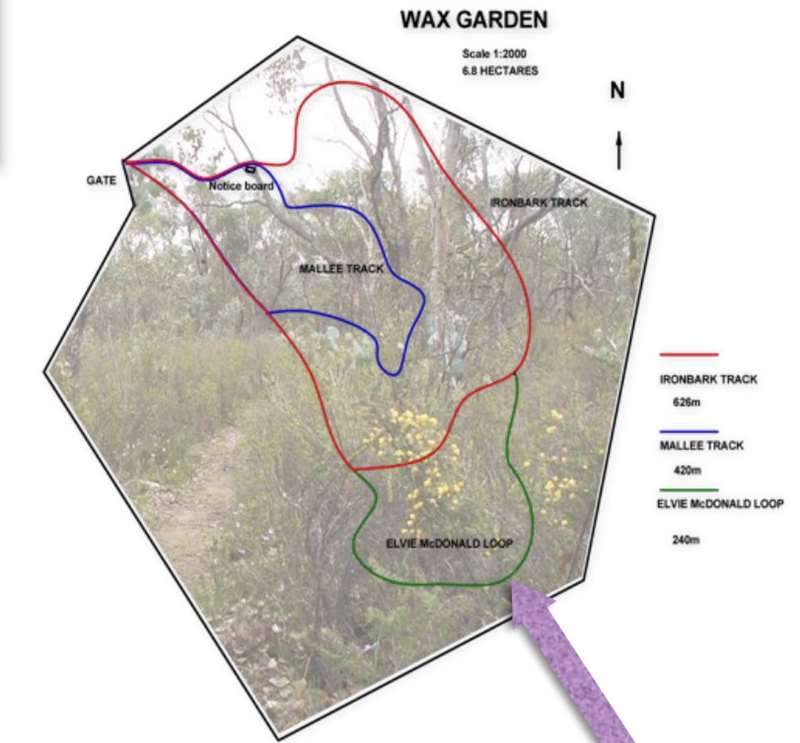St Arnaud - Wax Garden Conservation Reserve


The Wax Garden Conservation Reserve is a nature and wildlife area that features over 70 species of flora.
St Arnaud Visitor Information Centre has brochures which list all the flora species that can be found in the garden or download the list.
The best time of year to visit the Wax Garden Conservation Reserve is in October when the flora is in full bloom. During this time, the garden is bursting with life, making it a perfect time to explore the reserve and take in the beauty of the flora.
Wax Garden Conservation Reserve Map

The Elvie McDonald Loop is named for the first Secretary of St AFNC and later President for many years. Elvie was instrumental in securing the future of the Wax Garden as well as other local conservation areas.
History
The area has always been known to support a dense shrub understorey and groundcover and is a popular spot for outings especially in Spring when the wildflowers are at their best. The name 'Wax Garden' derives from the Fairy Wax Flower which is regenerating after years of heavy browsing by wallabies.
The Reserve was set aside under the Forests Act in 1972 on the advice of the St Arnaud District Forester. Mr R W Handmer who also installed the first sheep-proof fence. In 1991. St Arnaud Field Naturalist Club (St AFNC) with the approval and assistance of the Department of Conservation and Environment began a project to improve the Reserve, installing walking tracks and name plates and compiling species lists. St Arnaud Woodworkers Club members using materials funded by Western Victorian Field Naturalists Clubs Association and St AFNC built and installed the Information Shelter in 1994. That only the roof has had to be refurbished is testament to the standard of the original work.
In 2005 Parks Victoria and St AFNC installed a new 1 information display to reflect the Reserve's revised status as part of the new St Arnaud Regional Park. Species name plates were upgraded and the entrance gateway improved.
A State Government Grant in 2016 allowed St AFNC to enlarge and re-fence the Reserve to prevent wallabies, kangaroos, rabbits and hares from decimating the understorey shrubs and herbs. The Reserve has been increased in size from 3.84 ha to 6.84 ha and boasts 3 short walking tracks. At least 2 threatened flora species are in the Reserve - Goldfields Grevillea and Buloke.
Ecology
Underlying rocks n the St Arnaud Range are extremely ancient and were laid down some 550 million years ago as part of a deep marine sediment. Natural weathering and later incursions by ancient seas have resulted in the worn hills and poor soils.
The Wax Garden is part of an area of Heathy Dry Forest EVC (Ecological Vegetation Class) within the main Box-Ironbark Forest EVC. It also contains Mallee EVC species.
This combination of 3 different EVCs accounts for the rich and diverse vegetation which includes 7 species of Eucalypt. Immediately to the south is the St Arnaud State Forest, still used for firewood harvesting.
A few kilometres further south Centre Rd traverses Stoney Creek Nature Conservation Reserve before entering the new Kara Kara National Park, the biggest intact area of Box-Ironbark forest remaining in Victoria.
Mammals and Reptiles
The forests around the Wax Garden support the solitary Black or Swamp Wallaby ( Wallabia bicolor). There are small groups of Eastern Grey Kangaroos (Macropus giganteus) and the Echidna or Spiny Anteater (Tachyglossus aculaeatus) is often seen trundling from one ant-nest to another during the warmer months.
Reptiles are represented by the fierce-looking but harmless Shingleback or Stumpy-tailed Lizard (Tiliqua rugosa) and many members of the Skink family which can be seen scurrying between grass clumps.
The Eastern Brown Snake (Pseudonaja textilis) and Tree Goanna (Varanus varius) are also about and care should be exercised when walking through the Reserve and elsewhere in the bush.
Birds
Many species are present with some 47 recorded for the Bird Atlas over the last decade including a number of rare and threatened woodland species.
A regular Autumn-Winter visitor is the endangered Swift Parrot (Lathamus discolor) which migrates from Tasmania to feed on the mainland. One sighting of the once frequent but now critically endangered Regent Honey-eater was recorded in the last decade. Also seen in the area but not the Reserve is the rare Painted Honeyeater (Grantiella picta).
Review:
The reserve is located off Centre Road, about 800m along a good gravel road from Lock Road. Don't be distracted by side roads.
There is a car park with a picnic table. The reserve is fenced with a gate (please make sure the gate is closed after you enter and leave). Head up to an information sign under a roof. From here there are two alternative routes - Ironbark Track to the left and Mallee track to the right. We followed Ironbark Track which has a narrow, hard gravel path. Some of the trees and bushes are labelled with names.
When we came to the McDonald Loop turnoff, there was a seat. We then rejoined the Ironbark Track and then could either follow the Mallee Track or continue back to the start on the Ironbark Track.
The paths were well-maintained and clear on the sides. There were a lot of ants along the path and if you stopped they tried to climb up onto your shoes. The optimum time to visit is October. We visited in mid November and the wild flowers were fading.
Photos:
Location
Centre Road, St Arnaud 3478 View Map
Web Links
→ Wax Garden Conservation Reserve Brochure (PDF)








